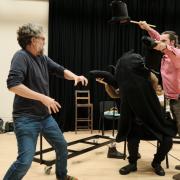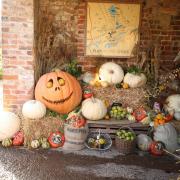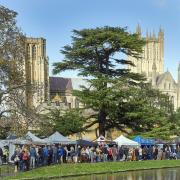Wildlife watcher Tony House recalls magical moments last June when he was able to take some stunning photographs of a family of Kestrels. The birds had made their nest in a tree stump near his home town of Frome. For three weeks Tony, a self-employed builder, watched the spectacle from a nearby tree.

‘To spend as much time as possible up the tree I would start work early, work without food or stopping until three o’clock and go up the tree until dark. I was surprised each day at the amount the chicks had grown.

The discomfort of the three weeks in the tree, being bitten by insects, suffering sun burn - then minutes later being soaked through - and on one occasion being nearly blown out the tree when the wind suddenly got-up was worth every moment.

This was due mainly to the uniqueness of the spectacle before me. I can honestly say I was not bored once, unlikely as it may seem.
I watched the male kestrel cache food in the form of small birds, mice, voles (and, on one occasion, a young pigeon) before flying off to catch more.
I videoed the chicks when in unison all their heads turned and they watched the female circle, before bringing the food to them.
The chicks, on average, were fed once every three and a half hours but sometimes within minutes. The parent bird stayed at the nest for only six seconds which meant if you were not totally prepared, camera at the ready, you missed it and had to wait again, and again.
At the first sign or sound of danger they would totally disappear down into the ‘chimney’, not a head to be seen. They were frightened by the buzzard family that flew by daily but could be heard coming from miles off through their constant calling (young kestrel chicks would soon make a tasty meal), a woodpecker, having its nest in a dead tree some 50 meters away, or the humble pheasant walking by minding its own business.
The chicks took around four weeks to fledge before flying off to find their own territories, in that time going from balls of fluff to young teenage hooligans zooming around the place trying their luck at most any unfortunate creature that came into view - a bird, cat or even someone’s bewildered dog taken for a walk. Once spotted, no matter what, one at a time or all together they would have a go at it usually joined by one of the parents.
By early July all but two of the chicks had left the nest going a short way into a small tree and the parents would feed them from there.
To encourage the last two to fly the nest the female parent would sit with food in another tree and eventually the two hungry ones would fly to her, whereupon the three that had fledged promptly flew back to the nest thinking food was about to be delivered, and so on. A joy to watch.’
* If you would like an illustrated talk on wildlife seen around Somerset please contact me on 01373 461314; anthony-house@sky.com



























